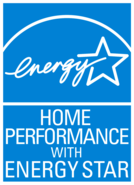When people are cold in their house they think “I need better insulation”. This may be true, but Air Sealing can be as important as or potentially MORE important than insulation. If air is moving through your building, quite often it is coming from outside, so outside conditions are coming inside. Air coming from the outside is called Air Infiltration or Air Leakage. New International, State and City codes limit the amount of Air Leakage in new and gut-renovated buildings. By the way, limiting Air Leakage doesn’t just help in the Winter; it helps in the Summer as well. You can read more one of the effects of Air Leakage in the Batt Insulation discussion.
Air Sealing can be accomplished with a variety of materials and methods. EnergyPro tends to favor Spray Foam Insulation as one material to use since it is both thermal insulation and an Air Barrier. Some foam is a Vapor Barrier as well. Other materials for Air Sealing include: Window & Door Foam, Caulking, Backer Rod, Weatherstripping, Door Sweeps, etc.




